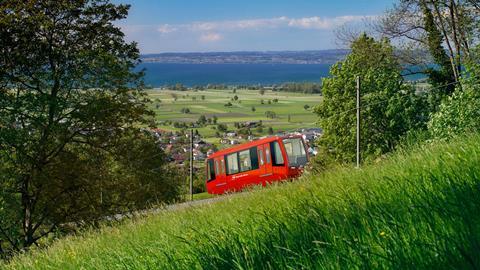
SWITZERLAND: Stadler is to supply what it says will be the first fully automated adhesion and rack-and-pinion railcar for use on in an open overland railway environment, rather than in a tunnel or closed network where there is little risk of an obstacle on the line.
The 600 V DC railcar has been ordered by Appenzeller Bahnen for use on the 1·96 km long, 1 200 mm gauge Rheineck – Walzenhausen line, designated route S26 of the St Gallen S-Bahn network.

It will replace a life-expired BDeh 1/2 railcar manufactured by SLM, FFA and BBC in 1958, when the line which had opened in 1896 was converted from a funicular to the Riggenbach rack system and joined to an adhesion tramway.
‘Pioneering work’

The railway’s automation project is costed at SFr25m and commissioning is scheduled for 2026.
Announcing the rolling stock contract on September 28, Stadler said it will be the first time that it has equipped a mountain railway vehicle with its own Communication-Based Train Control. Stadler’s technology can support different grades of automation, with AB opting for GoA4 fully automated operation. There will be no staff on board, but control room teams will be able to intervene by remote control if required.
Stadler said dozens of fully automated railways already exist in tunnels or on closed track systems, such as the Lausanne metro, where the track must be monitored to ensure that there are no obstacles. However, the AB vehicle will running as an open railway alignment, with the route including a level crossing, and the CBTC must monitor the track and detect obstacles.
Marc Trippel, Head of Stadler’s Signalling Division, said the project ‘is a milestone in the digitalisation of rail operations’, and would ‘represent valuable pioneering work for automated rail transport on inter-city routes’ with digitalisation projects around the world benefiting as a result.

















